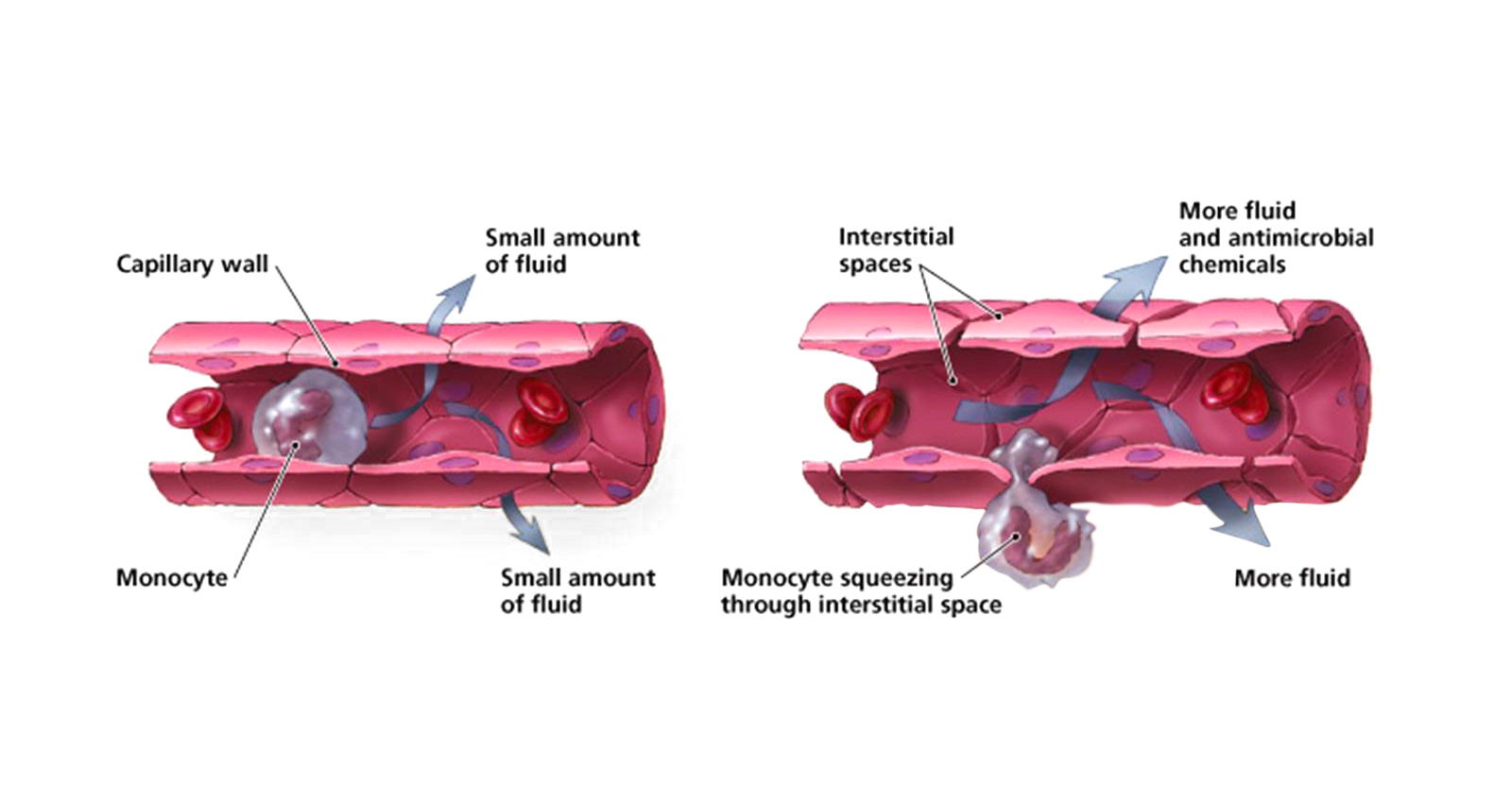RESEARCH AND DEVELOPMENT
How CRYODERM® acts on blood vessel receptors to restore tissue homeostasis
Research shows that key ingredients in CRYODERM® also act on receptors in the blood vessels. These key ingredients act to restore tissue homeostasis.
CRYODERM®constricts blood vessels when they are over-dilated.
When your muscles or joints are inflamed, such as after trauma, exertion, or in arthritis, the blood vessels become leaky and let plasma, white blood cells, and cytokines-the so-called "inflammatory soup" out into the surrounding tissue. The tissue becomes red, warm, swollen, and painful. CRYODERM'S® proprietary formulation counteracts the vasodilatory effects of the inflammatory mediators making blood vessels contract. This reduces swelling, redness, inflammation, eliminates pain, discomfort and restores the tissue homeostasis.
CRYODERM® dilates blood vessels when they are in spasm.
When your muscles are in spasm, the blood vessels are constricted, reducing the blood flow to the area and depriving the tissue of the vital oxygen. In this scenario CRYODERM'S® proprietary formulation causes relaxation of blood vessels and a reduction in sympathetic nerve-mediated contraction. CRYODERM® helps restore the natural balance by dilating the blood vessels, thus improving microcirculation, tissue oxygen supply, removing the by-products of metabolism, resolving interstitial acidosis and speeding up tissue healing.
Findings:
A transient receptor potential channel that was previously believed to be found only in a subpopulation of sensory neurons, was recently identified in blood vessels. Isometric contraction studies on endothelium-denuded relaxed vessels found small contractions on application of CRYODERM'S® Key Ingredients. However, these ingredients caused relaxation of vessels precontracted with KCl (60 mM) or the α-adrenoceptor agonist phenylephrine (2 µM) and a reduction in sympathetic nerve-mediated contraction. Thus, these key CRYODERM® ingredients play multiple functional roles, likely to be in a tissue-and activation state-dependent manner, producing opposite effects, causing vasoconstriction or vasodilatation, depending on previous vasomotor tone.
Summary: CRYODERM® aids in regulating blood flow depending on the tissue state, restoring natural homeostasis.
References:
Am J Physiol Heart Circ Physiol. 2009 June; 296(6): H1868–H1877. Christopher D. Johnson, Donal Melanaphy, Andrew Purse, Susan A. Stokesberry, Paula Dickson, and Alexander V. Zholos. Transient receptor potential melastatin 8 channel involvement in the regulation of vascular tone. Am J Physiol Heart Circ Physiol. 2009 June; 296(6): H1868–H1877. Cardiovascular Biomedical Research Centre, School of Medicine, Dentistry and Biomedical Sciences, Medical Biology Centre, Queen's University, Belfast, United Kingdom.
